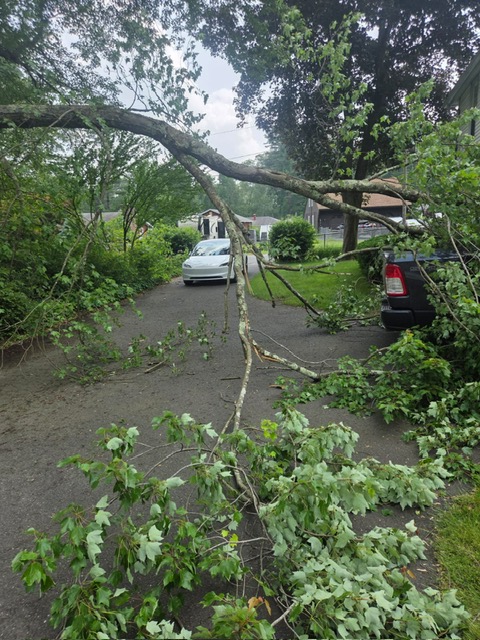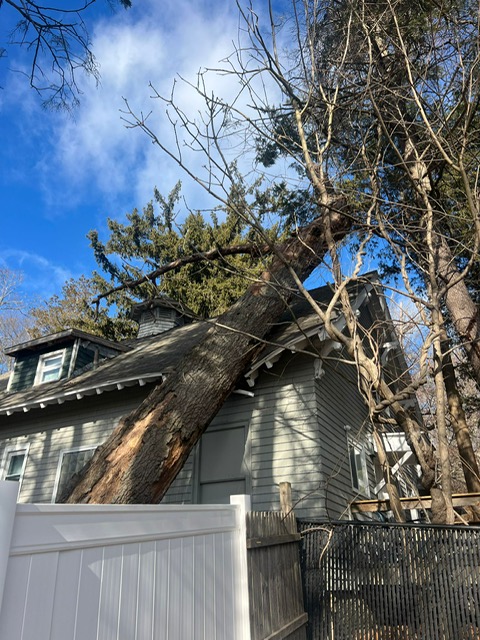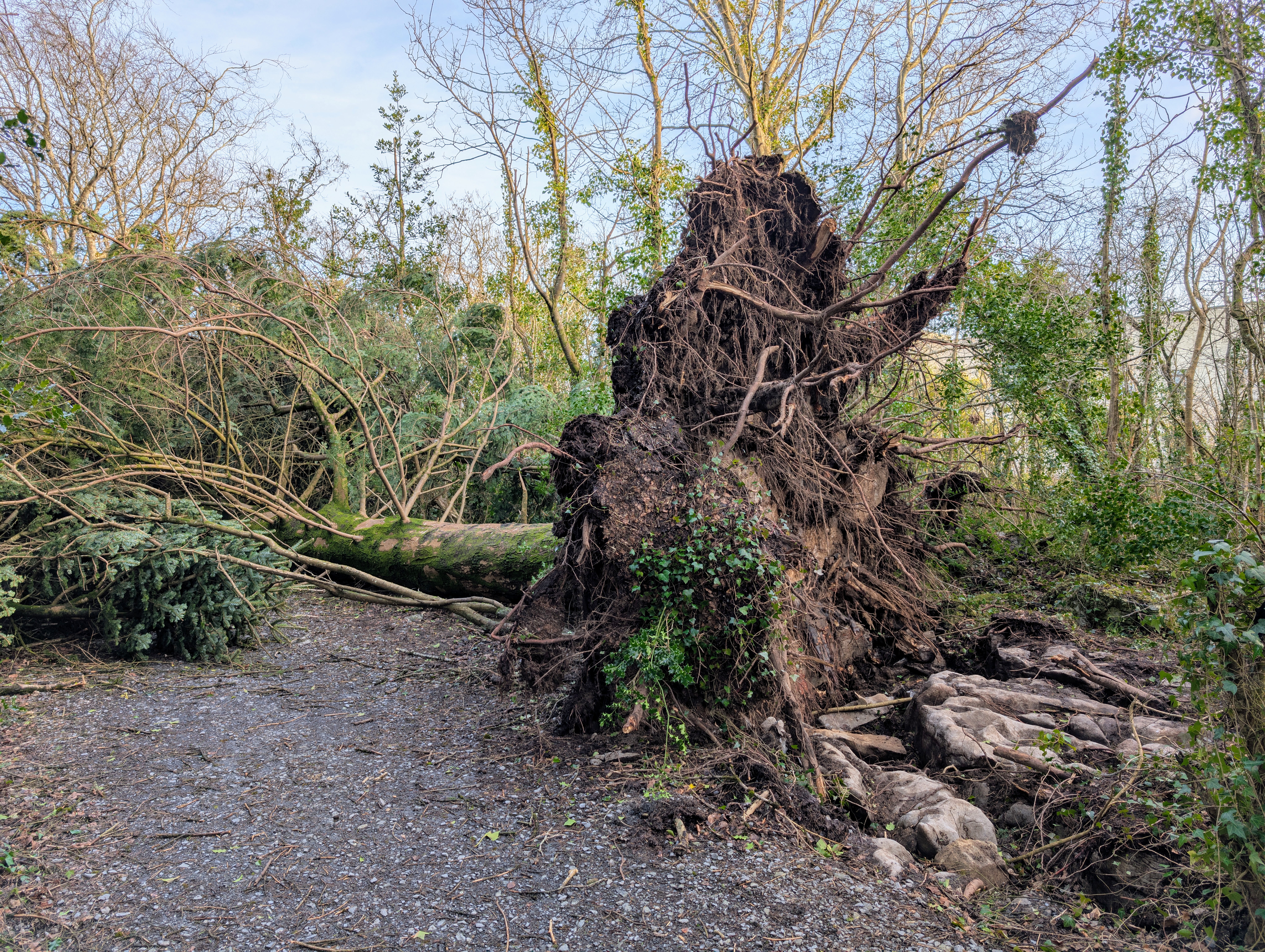The Hidden Dangers of Microburst Storms for Trees
By Tree Emergency Expert
Tree Emergency Expert

“A microburst can unleash winds over 100 mph — faster than most tornadoes.” When most people think of storm damage, they picture hurricanes or blizzards. But microbursts? Those often fly under the radar — until they take out half the trees in your neighborhood.
The Hidden Dangers of Microburst Storms for Trees
“A microburst can unleash winds over 100 mph — faster than most tornadoes.”
When most people think of storm damage, they picture hurricanes or blizzards. But microbursts? Those often fly under the radar — until they take out half the trees in your neighborhood.
Unlike large, sweeping storms, a microburst is a short, violent downburst of wind that can tear through an area in minutes. The damage is often concentrated, devastating, and unpredictable. And here’s the kicker — many healthy-looking trees don’t stand a chance.
🌪 What Exactly Is a Microburst?
A microburst is a sudden column of sinking air that hits the ground and spreads out rapidly. Think of it as a giant fist slamming down from the sky.
In Connecticut towns like Avon, Shelton, and West Hartford, we’ve seen microbursts uproot massive oaks, snap pines like matchsticks, and leave streets looking like a logging yard. Because the winds blast in one direction, they can create a “domino effect” of falling trees.
🌳 Why Microbursts Are So Dangerous for Trees
Even healthy root systems are no match for 80+ mph winds combined with saturated soil. In neighborhoods with older trees — like Weatogue, Canton, or Unionville — shallow-rooted species (maples, spruces, pines) are particularly vulnerable.
Unlike hurricanes that give trees some “warning” with hours of heavy wind, microbursts are instant. A single blast from one direction is more likely to snap trunks or topple trees at the base.
A tree may look healthy but still have decay, insect damage, or past storm injury. Microbursts find those weaknesses fast.
🛠 How to Protect Your Trees Before a Microburst
You can’t stop a microburst, but you can reduce the risk of catastrophic damage.
Get a Professional Tree Risk Assessment — A licensed arborist can spot weak limbs, leaning trunks, or hollow sections before they fail.
Prune for Wind Resistance — Removing dead or crossing branches and thinning dense canopies lets wind pass through more easily.
Remove Hazard Trees Early — If a tree is leaning toward your house, driveway, or neighbor’s property, waiting until after the storm could cost you far more.
🚨 What to Do After a Microburst Hits
If a microburst sweeps through your area, here’s your quick-action checklist:
Stay Back from Damaged Trees — Hanging limbs or partially uprooted trunks can fall without warning.
Call a Licensed Tree Removal Company in CT — Emergency removal should be handled by insured professionals, especially when power lines are involved.
Document Everything for Insurance — Take clear before-and-after photos and keep receipts for cleanup costs.
Check Neighbors’ Property — Sometimes damage spreads across property lines, and liability questions come up fast.
📞 Fast, Licensed Tree Removal in Connecticut
At 1 Tree Emergency, we specialize in storm damage tree removal — including microburst cleanup — across Avon, Shelton, West Hartford, and surrounding areas. Our crews are fully licensed, insured, and equipped to handle even the most dangerous removals.
✅ 24/7 emergency response ✅ Licensed tree removal ✅ Full insurance documentation for claims ✅ Fast service to prevent further property damage
📱 Call us at (866) 320-7003 🌐 www.1treeemergency.com
✅ Final Takeaway
Microbursts may be short-lived, but their impact can last for years — in property damage, insurance headaches, and lost trees. The best defense? Know the risks, take preventive action, and have a reliable emergency tree service on speed dial.
Share this article:
Related Articles

Tree Damage and Insurance Claims: What Homeowners in the U.S. Should Know After a Storm
Not all tree damage is treated the same by your homeowners insurance. In most cases, you’re covered if a fallen tree damages your house, fence, or garage — but there are exceptions. For example, you’re usually protected if a storm knocks a tree onto your roof or if a neighbor’s tree falls onto your property. However, if a dead or neglected tree comes down without hitting anything, or blocks only your yard, your policy may not cover the removal costs.

Nor’easter 2025: What CT, NJ & NY Homeowners Should Know (And How to Protect Your Trees)
This upcoming nor’easter isn’t just targeting Connecticut — it’s also expected to hit New Jersey and New York with strong winds, heavy rain, and coastal flooding. Trees near the coast or in vulnerable spots will face risks. Get your property prepared now to avoid damage.

How Do I Safely Inspect Tree Damage After a Storm?
At 1 Tree Emergency, we specialize in emergency tree services and post-storm response, so we know what to look for when assessing storm damage. This guide will help you understand how to safely inspect trees after a storm, what warning signs to check for, and when it’s time to call a professional.
Need Emergency Tree Service?
Our team of certified arborists is available 24/7 to handle any tree emergency.